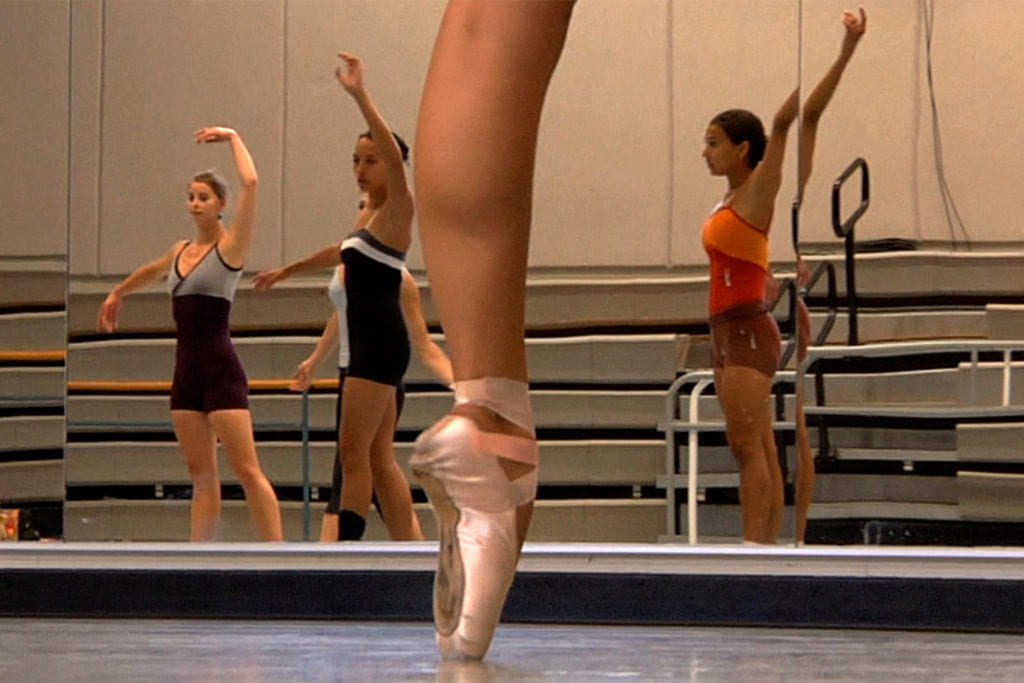Keeping dancers on their toes
New technique allows MRIs of ballet dancers en pointe, aiding injury treatment and prevention.

A ballerina’s courage inspired athletic trainer Jeff Russell to switch his specialty from traditional athletes to dancers.
In 2002, he was working in a sports medicine clinic at Mississippi’s Belhaven College – caring for basketball and football players – when, one day, a petite ballet dancer entered the facility, turning heads.
“She came straight from rehearsal, still wearing a leotard,” Russell recalls. “She was in such pain that she walked right into what was probably an intimidating environment.”
He diagnosed the ballerina with a damaged Achilles tendon and facilitated her eventual recovery with therapeutic treatments and training exercises. Soon, word got out among the school’s dancers that Russell took their injuries and concerns seriously.
“The physical rigors of ballet are as great as in any other sport, and participants have the injury rate to prove it,” he says.
Now an assistant professor of dance science at UC Irvine, Russell is dedicated to the prevention, treatment and rehabilitation of dance-related injuries. He runs a clinic in the Department of Dance and leads a team of student researchers who study such dance maladies as snapping hips, stress fractures, and tendon and muscle strains.
“Dancers endure long rehearsal periods and repetitive body movements,” Russell says. “They also tend to have a higher pain threshold and tolerance for pain than nondancers. Consequently, they experience a lot of injuries.”
But he doesn’t just treat dancers. Russell is at the forefront of dance science research. The journal Acta Radiologica recently published a study of an MRI method he developed for evaluating the ankles of female ballet dancers standing on their toes.
It takes years of training to build up sufficient strength in the feet, ankles, legs, knees and abdomen to dance en pointe, and sprained ankles and tendon damage are common.
The scans, which require subjects to stand still en pointe for two and a half minutes, provide insight into the weight-bearing anatomy of dancers – giving researchers a rare look at how bones, joints and soft tissues are affected by the position.
Russell and scientists in England imaged the en pointe ankles and feet of nine female ballet dancers wearing metal-free pointe shoes. An open MRI table was rotated into a vertical position, putting the dancers in an upright, weight-bearing posture. Adjustable wooden blocks were used to support their feet and align their ankles to the scanner.
Later, the researchers – along with colleagues in UCI’s departments of radiological sciences and orthopaedic surgery – analyzed the images and compared the findings to dancers’ reports of pain.
They discovered, among other things, that anatomical variations seen on the MRIs were not necessarily correlated to pain sensation, probably due to the way dancers process pain compared to nondancers.
Moreover, the study demonstrated the viability of the new MRI technique as a means to view the interior of dancers’ ankles and feet when en pointe – shedding light on how the musculoskeletal system responds to dance and furthering progress toward the ultimate goal of reducing injuries.
Russell’s students appreciate his respect and understanding of the art and science of dance.
Shannan Slagle, a senior dance major at UCI, says he has inspired her to pursue a career in physical therapy once she moves beyond professional dance. She conducts research in Russell’s lab, studying joint flexibility and range of motion in dancers’ ankles.
“For a nondancer, he’s very interested in dance terminology and studying us in order to better understand common injuries,” Slagle says. “A lot of times, people don’t realize how strenuous dance is. The goal is to make it look effortless and work past the many physical challenges that come up.”
Amy Quanbeck, a third-year dance major, has taken Russell’s kinesiology course and learned injury prevention exercises from him at the dance clinic.
“Professor Russell regards us as athletes, and he really knows his stuff,” she says. “His intent is to keep us healthy and safe while educating us on injury treatment and prevention.”